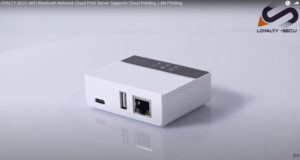Selection Factors for Home Outdoor Surveillance Cameras:
- Camera Lens
- Camera Waterproof & Dustproof Function
- Camera Night Vision
- Camera Data Storage
- Camera Power Supply and Network Connection
- Camera Intelligent AI Function
Outdoor Security Camera Application Scenarios:
Outdoor courtyards, farmyards, entrances, roads, fixed parking spaces
surrounding the villa, fence, mobile paving, orchards, farms, fishponds, etc.
For outdoor monitoring needs, due to the wide monitoring range and high night vision requirements, we have to face more complex external conditions, so we need to be more careful when choosing. Here are a few factors that need to be focused on:
1.Camera Lens Focal Length
How far can surveillance cameras see? This is a question we often encounter when choosing surveillance cameras.
The effective monitoring distance of a surveillance camera is mainly determined by the lens focal length and illumination angle. There are complex calculation formulas, and different manufacturers will obtain slightly different data due to different lens apertures and algorithms.
Ordinary home users do not need to spend too much time and energy to understand this. They only need to remember one concept: the larger the focal length of the lens, the farther you can see; the smaller the viewing angle range, the smaller the focal length; the closer you can see, the wider the viewing angle range.

Note: The illumination distance in the picture refers to the distance at which a human face can be seen clearly. The actual viewing distance will be longe
Most of the LOYALTY-SECU dome PTZ camera lenses are zoom lenses. Users can adjust the lens size according to the actual monitoring scene, which is more flexible and convenient. For situations where there are multiple points that need to be monitored but you only want to install one camera, you can consider the LOYALTY-SECU zoom camera or the Multi-lens PTZ Dome Camera.
2.Camera’s Waterproof and Dustproof Features
Outdoor monitoring inevitably has to face various extreme weather and environments, so waterproof and dustproof functions are also a priority for users.
For outdoor cameras, it must at least meet IP66 or above standards, which means it can completely prevent dust intrusion and withstand the impact of continuous high-pressure water columns. This can ensure that outdoor cameras are not afraid of wind and rain.
At present, most outdoor security PTZ cameras on the market are IP66 rated. Better outdoor cameras can reach IP67 level, which can meet basic waterproof and dustproof requirements. If you have higher requirements for temperature, humidity and waterproof level, it is recommended to choose IP67 Class outdoor camera.
- Camera Night Vision Function
Outdoor surveillance usually has high requirements for the night vision effect of the camera. Most of the current mainstream surveillance cameras on the market support infrared night vision function. On top of this, there are three types of starlight night vision, full color night vision, and black light night vision. Night vision mode.
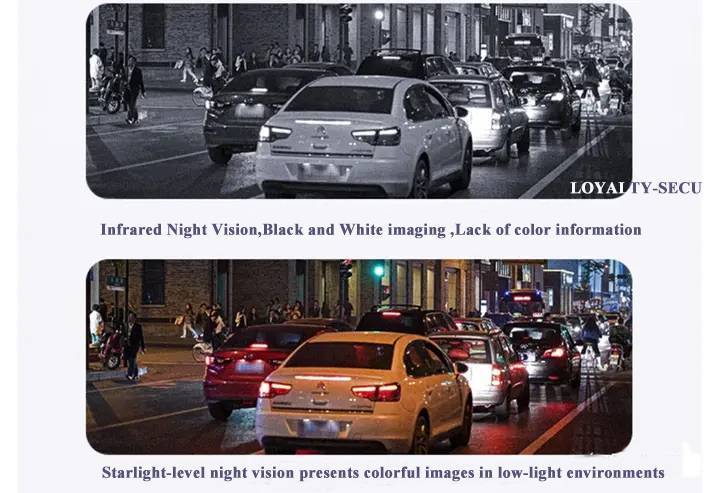
For outdoor surveillance, in order to ensure the night vision effect, it is recommended to choose an outdoor surveillance camera that supports starlight night vision or full-color night vision.
Starlight night vision usually uses a large aperture lens and a high-sensitivity sensor to absorb more light. It can still ensure clear color images in low-light environments. However, it will still automatically convert to black and white images after it falls below a certain brightness threshold.
Full-color night vision, when the ambient light is extremely low or even no light, the fill light will be automatically turned on to achieve full color day and night.
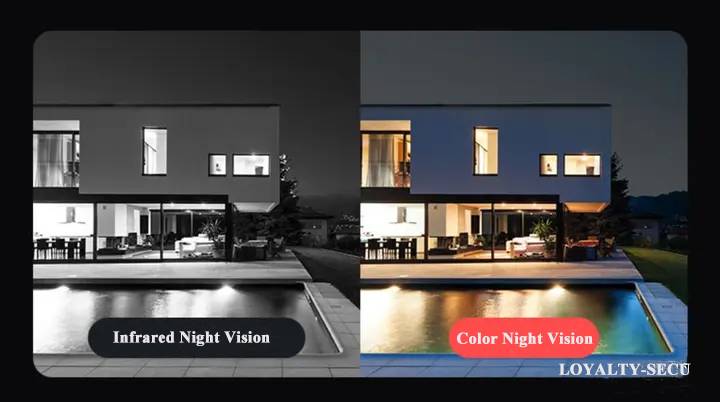
Most cameras of LOYALTY-SECU have built-in enhancement functions. For example, when the light is insufficient at night and the image is noisy and unclear, some cameras provide a 3D digital noise reduction function; when the light contrast is too large, the image background is too bright, or the image background is too bright. In dark situations, some cameras provide WDR wide dynamic function.
These enhanced functions can make the surveillance images purer, more delicate, and softer. Under the same configuration, you can give priority to cameras with enhanced functions.
4.Camera Storage Method
Currently, there are three main storage methods for surveillance cameras: memory card, network video recorder (NVR via HDD) storage, and cloud storage.
For situations where there is only one outdoor surveillance camera and the video storage cycle is not high, it is recommended that users choose memory card storage, which is currently the most cost-effective storage method.
On the contrary, if the video storage period is longer, or if there are multiple surveillance cameras that need to be stored at the same time, it is recommended to choose a hard disk video recorder for storage.
DVR or NVR storage requires separate configuration of hard disk video recorders and hard disks, which will increase the cost. However, in comparison, the storage capacity is much higher, it supports multiple camera inputs, and it is also convenient for centralized storage and centralized viewing.
Different manufacturers have different storage cycle calculation methods. The following figure is the hard disk storage cycle reference table provided by Hikvision. We can simply calculate how much storage space we need to purchase based on the camera resolution (number of pixels) and storage cycle.

However, since the video is stored in the cloud, it is not easily destroyed and is convenient for investigation and evidence collection. If you have high security requirements for video files, you can consider using both local storage and cloud storage.
5.Camera Power supply & Networking Method
Currently, there are four main power supply methods for surveillance cameras: power supply, network cable power supply, battery power supply, and solar power supply.
There are three main networking methods for surveillance cameras: network cable, wireless WIFI, and 3G/4G/5G Sim Card.
For outdoor monitoring, power supply and networking can often be considered together, for example:
- In situations where the power supply is not far from the room and the power supply is convenient, such as on balconies, gates, indoor courtyards, around villas, etc., it is recommended to choose a camera that is powered by a power supply and connected to home WiFi.
This method saves the trouble of network wiring. When the WiFi signal is unstable, the WiFi signal can be enhanced through a WiFi signal amplifier, which is simpler and more practical in comparison.
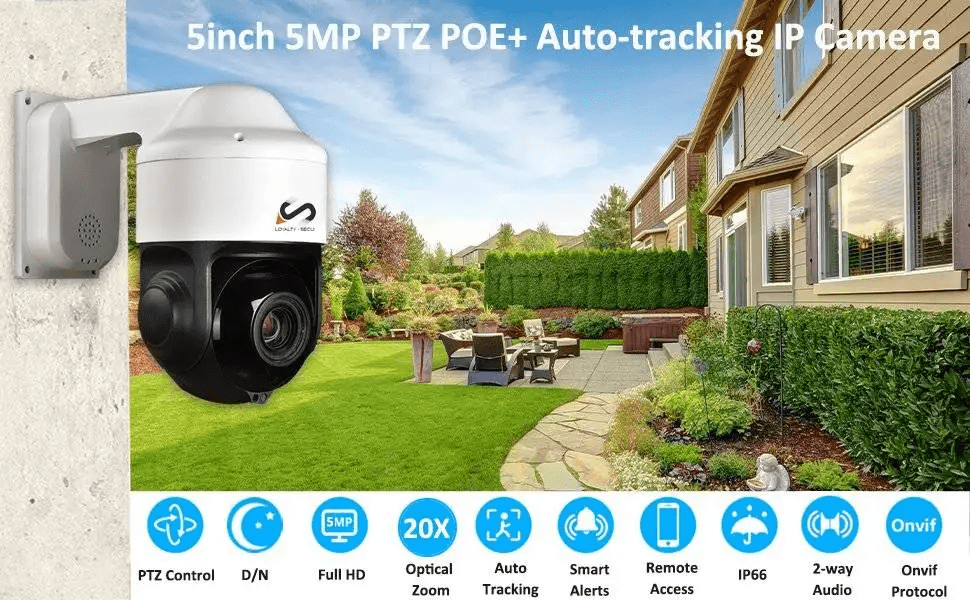
- 2. If there is some distance from the room and the WiFi signal cannot be covered or the signal is unstable, such as outdoor parking spaces, home gardens, vegetable fields, orchards, etc., you can choose POE (network cable) power supply and networking.
Surveillance cameras that support network cable (POE) power supply can work normally without power supply. Network cables can serve as power supply and networking at the same time, which is more suitable for scenarios that require multiple surveillance cameras.

The current maximum distance for data signal transmission with ordinary network cables (Category 5 or above) is about 100 meters, which can meet most needs.
3.For some situations where the monitoring range is very wide and it is inconvenient to connect wires, such as large farms, fishponds, orchards, etc., you can choose solar + battery power supply and 4G/5G sim card networking to achieve monitoring.
LOYALTY-SECU has developed professional solar power supply kit. Users can choose the appropriate solar power supply kit based on the actual installation environment and usage scenarios.
Generally speaking, the networking and power supply methods for outdoor monitoring need to be reasonably matched according to the existing conditions. For some special environments, it is also necessary to consider poles or choose waterproof and anti-corrosion materials.
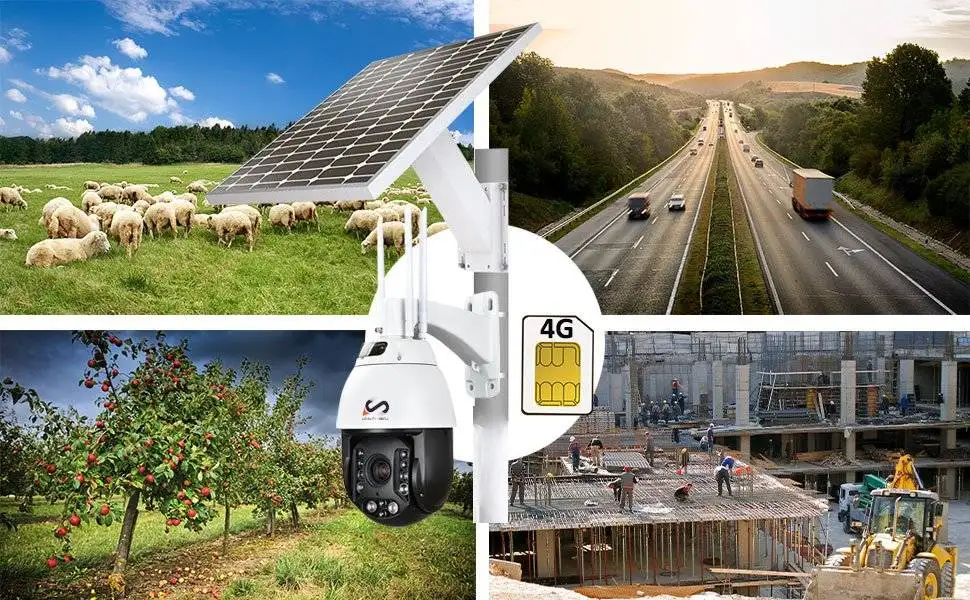
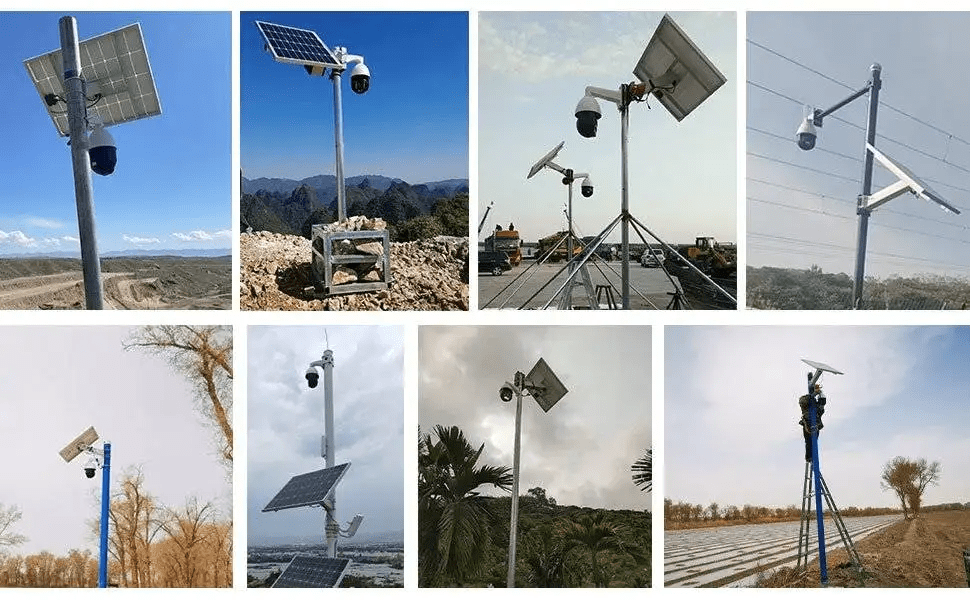
6.Intelligent AI Functions
For outdoor monitoring, in addition to the basic parameters and functions, you can also focus on the following four intelligent functions:
- Automatic cruise tracking: Outdoor surveillance generally requires a relatively large range of monitoring. The automatic cruise function allows the camera to automatically cruise through a certain sequence and cycle time interval, thereby achieving multi-point, large-scale monitoring. It is especially suitable for areas such as orchards, Scenes like farms and fishponds.
- Motion detection: Accurately determine whether someone is moving in the surveillance screen, and intelligently identify invalid and false alarms, making the alarm function more practical and able to be pushed to the bound mobile phone in a timely manner.
- Sound and light warning: When someone illegally breaks into a dangerous area, the camera detects the intrusion and can link the sound and light alarm to effectively deter illegal behavior.
- Two-way voice intercom: When an abnormal situation occurs, you can use the local two-way voice intercom function to take quick and effective response measures to various emergencies to avoid losses.
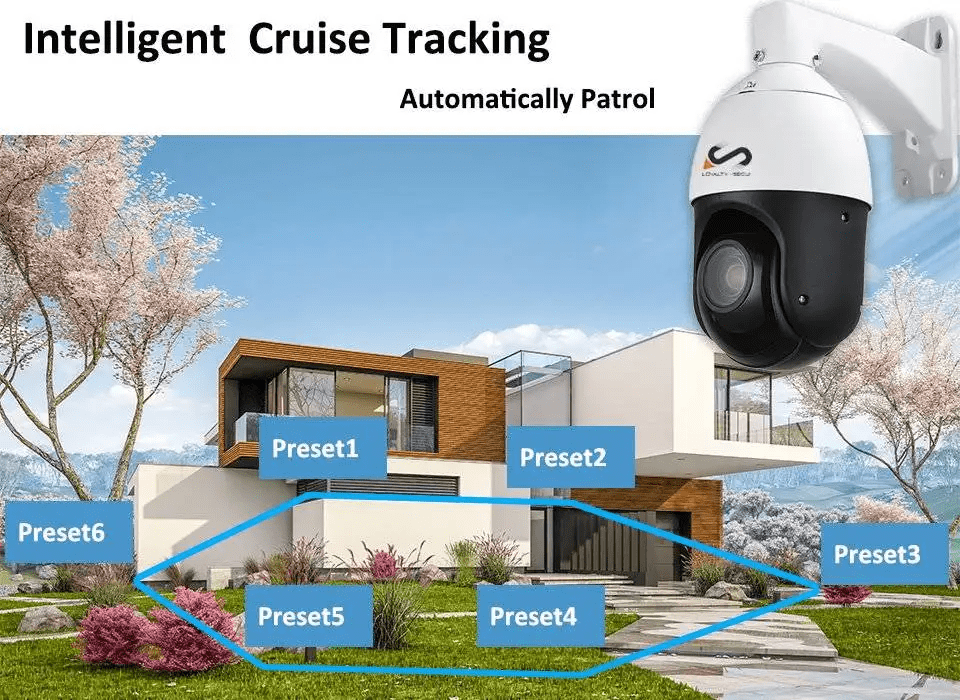
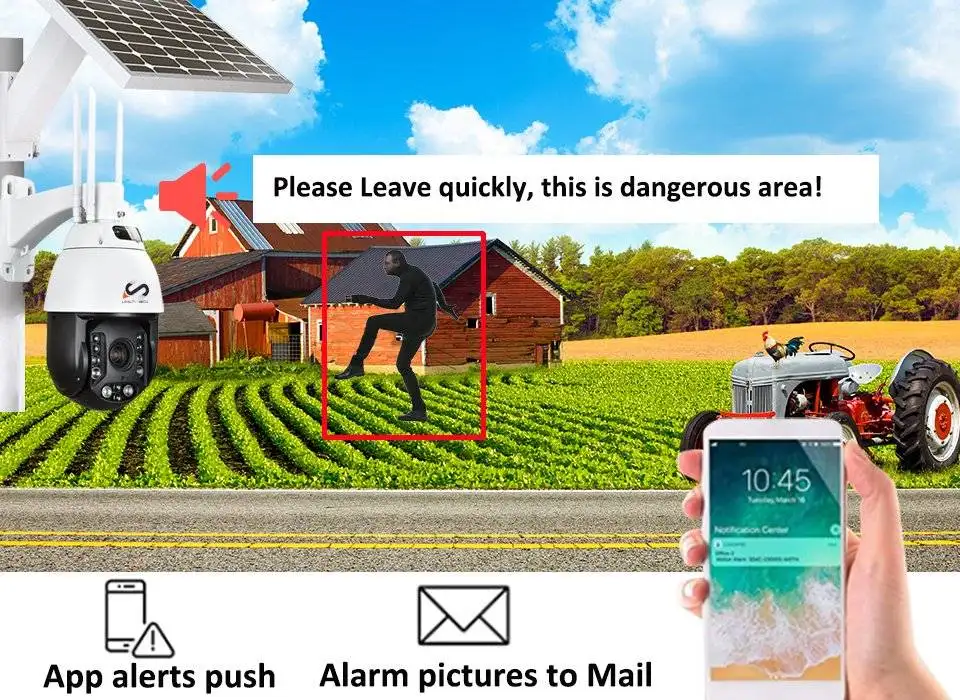
These smart functions have greatly improved the practicality of surveillance cameras, and we can also consider them based on actual needs when choosing.
Get Started with LOYALTY-SECU Security Camera to Protect Your Home and Family!!


